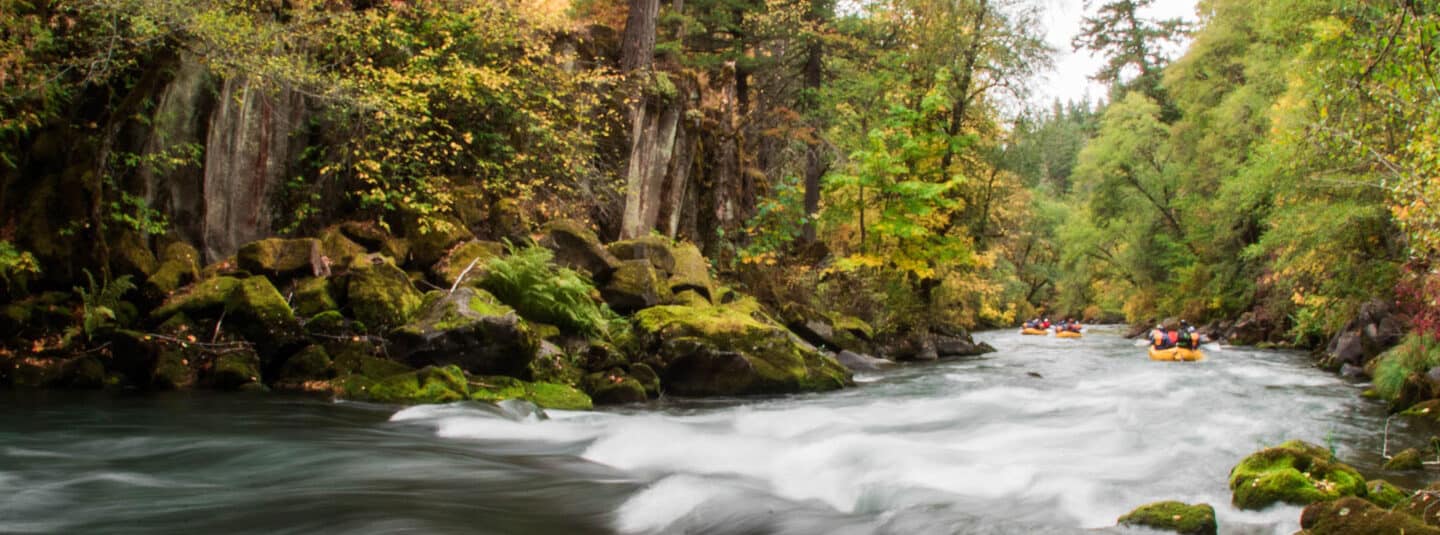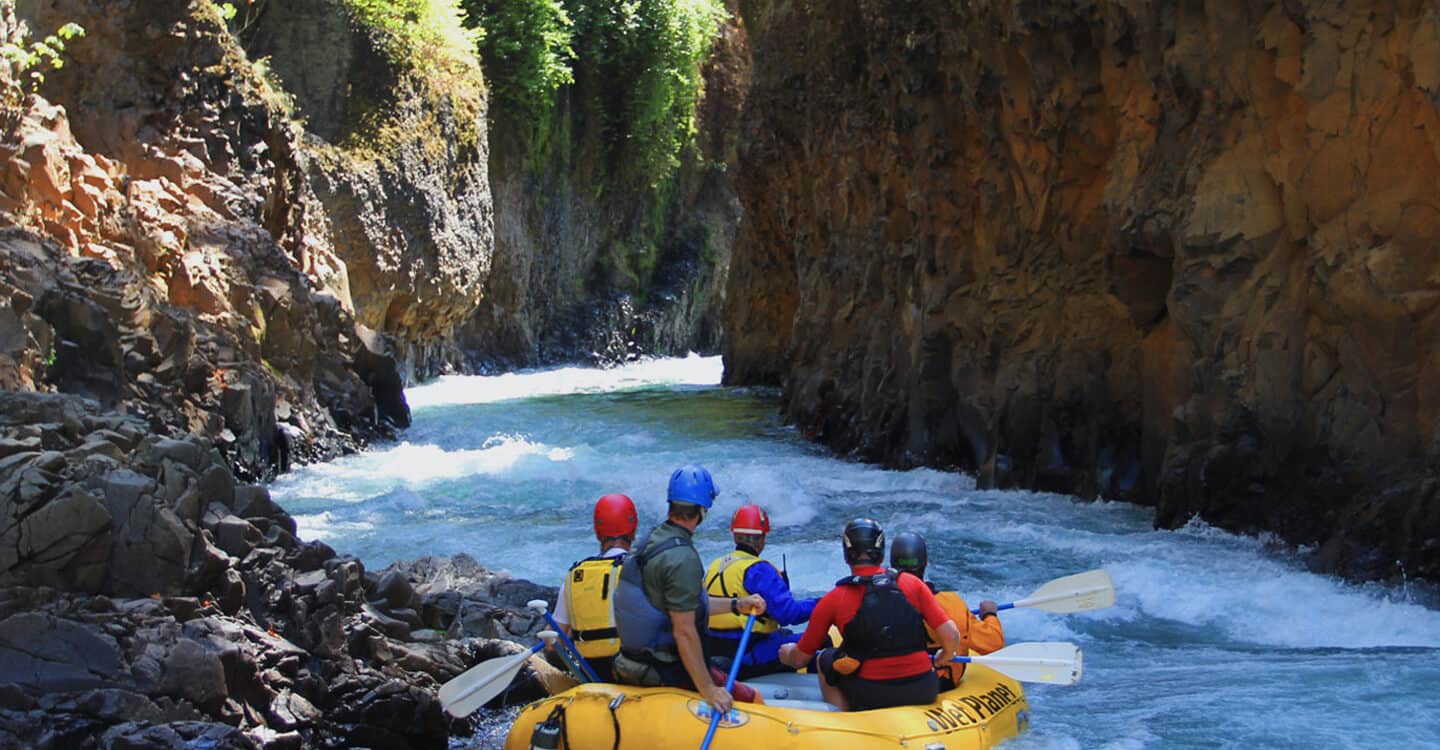Understanding Rapid Classifications
Whenever someone goes rafting or kayaking on whitewater rapids, it’s vital that they have a good idea of what to expect from the river. To clarify and simplify this process, all whitewater rapids are rated on a scale of I to VI. The rapids receive ratings based on a combination of difficulty and danger. The following describes the rapid rating system and information about which Wet Planet river trips and courses fall into which rating categories.
The classification system for whitewater rivers is not an exact science.
As with any rating system, there is an element of subjectivity. While most commercial outfitters and experienced paddlers agree on the rating of particular rapids, there will always be discrepancies. For example, someone believes a specific rapid should be Class III, while another thinks it should receive a Class IV rating.
Here’s the disclaimer: the classification system is only a guide. Most rivers are a combination of the classifications and have varying degrees of difficulties based on water levels.
The most important thing to remember with the classification system is that it has nothing to do with how much fun a rapid is. The system is based on difficulty and danger, which do not always equate with the “fun factor” of a rapid. Plenty of Class III rapids are more fun to raft than many Class IV rapids.
At Wet Planet, we use the following internationally accepted rating system:
Class I
Moving water with a few riffles and small waves. Few or no obstructions.
Perfect for day one of our Beginner Kayak Courses.
Class II
Easy rapids with smaller waves and clear channels that are obvious without scouting. Some maneuvering might be required.
Our Sit-on-Top Kayaking trip for beginners is a perfect Class II day trip! Day two of our Beginner Kayak Course progresses to Class II on the Lower Klickitat River.
Class III
Rapids with high, irregular waves and narrow passages that often require precise maneuvering.
The Upper Klickitat River rafting trip and the Tieton River rafting trip epitomize the Class III rafting adventure. The Middle White Salmon River trip can also fit in at certain flows. Our multi-day Owyhee River and Main Salmon River trips are also Class III.
Class IV
Long, difficult rapids with constricted passages that often require complex maneuvering in turbulent water. The course may be hard to determine, and scouting is often necessary.
Adding to our exclusive upper river stretch, the White Salmon River is one of the country’s best day-trip Class IV adventures. Some rapids on both the Main Salmon River and Owyhee River multi-day trips can be Class IV at high water levels.
Class V
Extremely difficult, long, and very violent rapids with highly congested routes, which should be scouted from shore. Rescue conditions are difficult, and there is a significant hazard to life in the event of a mishap. Class V is the upper limit of what is possible in a commercial raft.
High adventure class V rafting can be found on the Wind River and the West Fork of the Hood River. The famous Husum Falls drop on the Middle White Salmon is also a Class V option on our popular day trips.
Class VI
The difficulties of Class V carried to the extreme. Nearly impossible and very dangerous. For teams of experts only. Involves risk of life. Class VI rapids are not commercially raftable.
What can change a river’s classification?
First, the class designation may vary with fluctuating water levels. Typically, high water levels increase the difficulty of rapids. However, this is not always the case. Some rapids become more technical and more difficult at lower water levels. Second, the classification system does not consider the type of boat being paddled. Some rapids may present particular challenges for rafts, while others may be more difficult for a whitewater paddler in a kayak. Finally, significant events like landslides, ice storms, or floods can change the shape of rapids, thus altering their classification.
The bottom line is that assigning numbers to rivers is inherently subjective. Rivers are a natural force subject to change at any time. Luckily, that change doesn’t happen too often, allowing us to enjoy their whitewater more!
Please call us if you have questions about which rivers are appropriate for your group.







